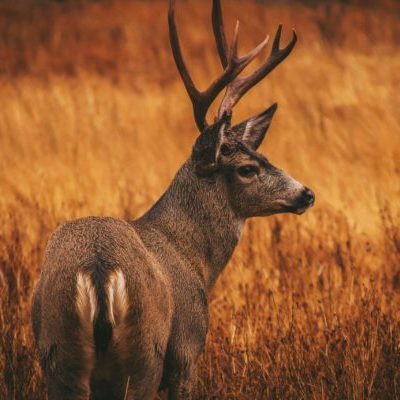By Valerie Weingart
As a young singer, one of my largest challenges was learning how to control my breathing. Long phrases defied me; I would expend all of my air before the end of the line, resulting in an embarrassing wheeze as I struggled to sing the final notes. How many writers have encountered something similar while trying to write in compressed forms, such as flash and micro? So much to say—take a deep breath—but then, all too soon, the word counter on the bottom of the document tells the sad truth: no words left! The breath’s run out! So the essay wraps up too quickly, a last gasp at whatever truth the writer wanted to tell.
When writing in compressed forms, it is imperative to consider how much time—how many words, how much “air”—a writer allots to each component of a scene. This consideration is directly related to pacing (or, in musical terms, tempo), and can evoke moods and tones connected to the speaker’s emotional state. Writers have many choices when it comes to pacing; to illustrate some of these possibilities, I am drawn to three particular Beautiful Things essays. “Beach Day,” by Elizabeth Amon, moves quickly, a brisk presto. “Floodscape,” by Lauren Crandall, is a strolling andante, or walking speed. “Weight of Bones,” by Jennifer Filardo, exemplifies an adagio, or rather slow pace. How do these different tempi allow each writer to expend their “air”?
A Breathless Presto: “Beach Day”
Through a combination of word choices, sentence types, and images laden in subtext, Amon whisks readers through a “Beach Day” that is the antithesis of leisure. Amon establishes the essay’s presto tempo in the opening sentence: “Blue skies, blazing sun, of course.” The commas and short phrases pass quickly; Amon has omitted the “and” that might connect them. The brisk pace continues in the next line, with the verb “fleeing” indicating speed: “It was a perfect day for fleeing city streets…” From here, the sentence whips through the names of various locations, allowing readers to follow the speaker’s flight. If each location were rendered in careful detail, the essay would be much longer—but the locations are not the point. The escape and the speaker’s anguished emotions are what matter.
Since Amon has flown through locations so quickly, she can linger in the heart of the essay. The pacing slows on the words, “Everything had changed,” allowing both the reader and the speaker to catch their breath; the contrasting tempo indicates the moment’s importance. Amon has allotted time and words to this part of her scene, letting readers consider the subtext of the images that surround it: menacing blanket and stuffed hippo, a doctor’s words, a collapse. When the speaker reacts to these thoughts, Amon pulls readers out of this pause and dashes to the beach. In the essay’s final moments, the quick tempo resumes: sentences spiral through the speaker’s actions and images of crashing waves, pebbly beaches, and powerful undertows. Here, Amon leaves readers to bob in the waves and consider just how everything has changed—to make sense of the scene along with the speaker.
A Strolling Andante: “Floodscape”
In this tableau, Crandall walks readers around her recently flooded property, inviting them to pause and consider what has changed overnight. The opening line sets the essay’s andante tempo: “On a winter’s sunny day, I can see the Minnesota River shimmering a quarter mile away—past the trail at the base of our hill, over the pond, beyond the meadow, between the walnut trees.” This long sentence meanders like the river it depicts, using commas, prepositions, and an em-dash to extend the line. There is movement here, but it is not hurried. The next line slows the pacing further by confining the setting to the speaker’s backyard. Now, Crandall has the time and word space to lead readers from animal to animal, devoting at least two sentences to each.
By taking this time, Crandall creates tension through contrast. Some animals, such as the beaver, thrive in this flood: “He swims where the pond banks used to be, grabbing long, floating branches in his teeth. Business as usual.” For other animals, the situation is not ideal: “But a bedraggled raccoon in my neighbor’s front yard staggers like a drunkard.” Slowing the tempo allows readers to observe the animals’ behaviors, pause, and grasp the situation’s complexity.
Crandall chooses to end with the barred owl’s peaceful message, giving him the most page space and the final say: “With patience the trail and the pond and the meadow and the walnut trees will return to us.” The fact that she chose to devote so much time to this message indicates that the essay’s theme is a hopeful one. In a scene such as this, Crandall could have chosen to give a quick list of as many animals and plants as word space would allow. But by slowing down and focusing on a few specific creatures, she illustrates the contrast and imbalance upon which the essay hinges.
A Meditative Adagio and Fermata: “Weight of Bones”
Jennifer Filardo’s “Weight of Bones” is a slow dive into a magnificent (if misunderstood) bird: the loon. The tempo is adagio, and I’ll also add the term fermata, which means “to hold.” Filardo directs readers’ focus to the loon in the opening sentence and then lingers on the animal throughout the essay: “His bones are solid. He relies on their weight to defy the buoyancy of water so he can stay down. Stay down among the fishy garden of underwater plants to watch for the flash of his next meal and give chase…” Through details and scientific facts, Filardo zooms in on the loon, focusing further and inviting readers to remain fixated on its actions. Readers cannot look away; the loon dominates the entire scene.
To slow the tempo further, Filardo asks a series of questions that create pauses for the reader to consider an answer. “Weight of Bones” depends on this methodical slowness, begging the question: What more might we learn if we slow down and peer beneath the surface—if we let curiosity and research help us burrow the bones of something? When the inquiries cease, Filardo ends the essay by repeating the word “only”: “Only he knows the color of the sky seen through lake water. Only he knows the sound of the absence of air. Only he knows the precious weight of bones.” Like the final chords of a symphony, the essay slows to a resonant finale, reinforcing its theme: the loon’s differences are what make him remarkable.
Though a 250-word limit might seem inhibiting, I hope these three Beautiful Things have illustrated that a micro essay’s possibilities are varied and exciting. When keeping these ideas of tempo, pacing, and focus in mind, a writer can determine which parts of a scene should receive the most attention—conducting readers through to their composition line by line.
An Exercise: The Writer as Composer and Conductor
- Step 1: Be the uninhibited composer: Write an essay that you believe to be a Beautiful Thing, but don’t worry about word count. Seriously. Just work out what you want to say and the scene you’d like to depict.
- Step 2: Draw an actual picture of the scene you’ve written, making sure to account for every object/thing/person you’ve mentioned. Write intangibles, like emotions, in the sky above the scene. But, you aren’t drawing the scene realistically. Instead, draw every element according to how much space you’ve given it on the page. A few words? Tiny. A couple lines? Bigger!
- Step 3: Study your image. What are the biggest components? Are those really the focus of your essay? How many components do you have? Do they all need to be mentioned? What themes have arisen?
- Step 4: Now, pick up your conductor’s baton: Re-write, thinking about tempo, pacing, and focus. If you need to focus on every object you’ve drawn, maybe your essay requires a fast tempo. Or, maybe you’re captivated by one object and want to zoom into it using research. The choices are yours!
- Step 5: Keep revising and re-drawing as needed until you’re at or below the 250-word count. Think about how you can use your writing tools to guide the speed at which a reader consumes your essay.
- Step 6: Ask yourself: has compression served or hindered the essay’s themes and ideas? If it’s hindered, perhaps the essay would work better in a longer form—which is wonderful, too!
**Check with your library to find out if you have an institutional subscription to ProjectMUSE, and thus, River Teeth’s archives.
Valerie Weingart, the current Managing Editor of Beautiful Things, graduated from Ball State University in 2018 with undergraduate degrees in music and English. In May 2020, she earned an M.A. in creative writing from Ball State. Beginning January 2021, Val will teach at a university in Poland as a Fulbright English Teaching Assistant.
Editor’s Note: Valerie Weingart will forever bear the distinction of having served as the first graduate intern for River Teeth at Ball State University, and as anyone who has ever worked with Valerie knows: she has set the bar high indeed. Valerie began in the summer of 2019, learning side-by-side with the new editors and becoming a true colleague in all things River Teeth. Just last week, Valerie both graduated and accepted a Fulbright to teach in Poland next year. We are singing-from-the-rooftops proud of her extraordinary accomplishments and thanking our lucky stars that Valerie has accepted our invitation to continue as Managing Editor of Beautiful Things.
Image courtesy of Pexels










